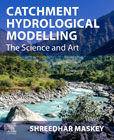
Catchment Hydrological Modelling: The Science and Art covers various methods (and equations) for modeling all components of a CHM. Readers are presented with multiple methods and approaches to modeling the same component, allowing them to distinguish the differences between methods. The books also provides a clear understanding of what makes some commonly used hydrological models similar or different and what their strengths and weaknesses may be. This comprehensive guide contains questions and answers in each chapter, along with concepts and detailed equations that are fundamental to understanding CHM. This book is useful to students and professionals in the fields of catchment and hydrology, as well as environmental and civil engineers. Includes practical advice on developing and/or applying CHM models, empowering readers to do so themselves Presents practical aspects of catchment modeling, from model structure design to model operation Presents hydrological catchment modeling in a clear and coherent way while also describing different approaches for the same processes INDICE: 1. Introduction2. Meteorological data preparation for a catchment model3. Model of evaporation4. Model of unsaturated (vadose) zone flow5. Model of surface (overland) flow routing6. Model of groundwater flow7. Model of river flow8. Model of snow, ice and glacier9. Putting all the component models together10. Model calibration, validation and uncertainty11. Hydrological impacts of climate change12. Notes and bibliography
- ISBN: 978-0-12-818337-3
- Editorial: Elsevier
- Encuadernacion: Rústica
- Páginas: 202
- Fecha Publicación: 25/04/2022
- Nº Volúmenes: 1
- Idioma: Inglés
